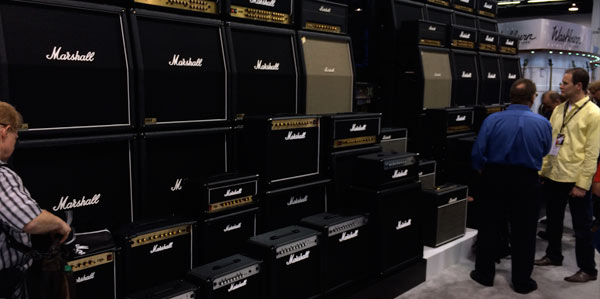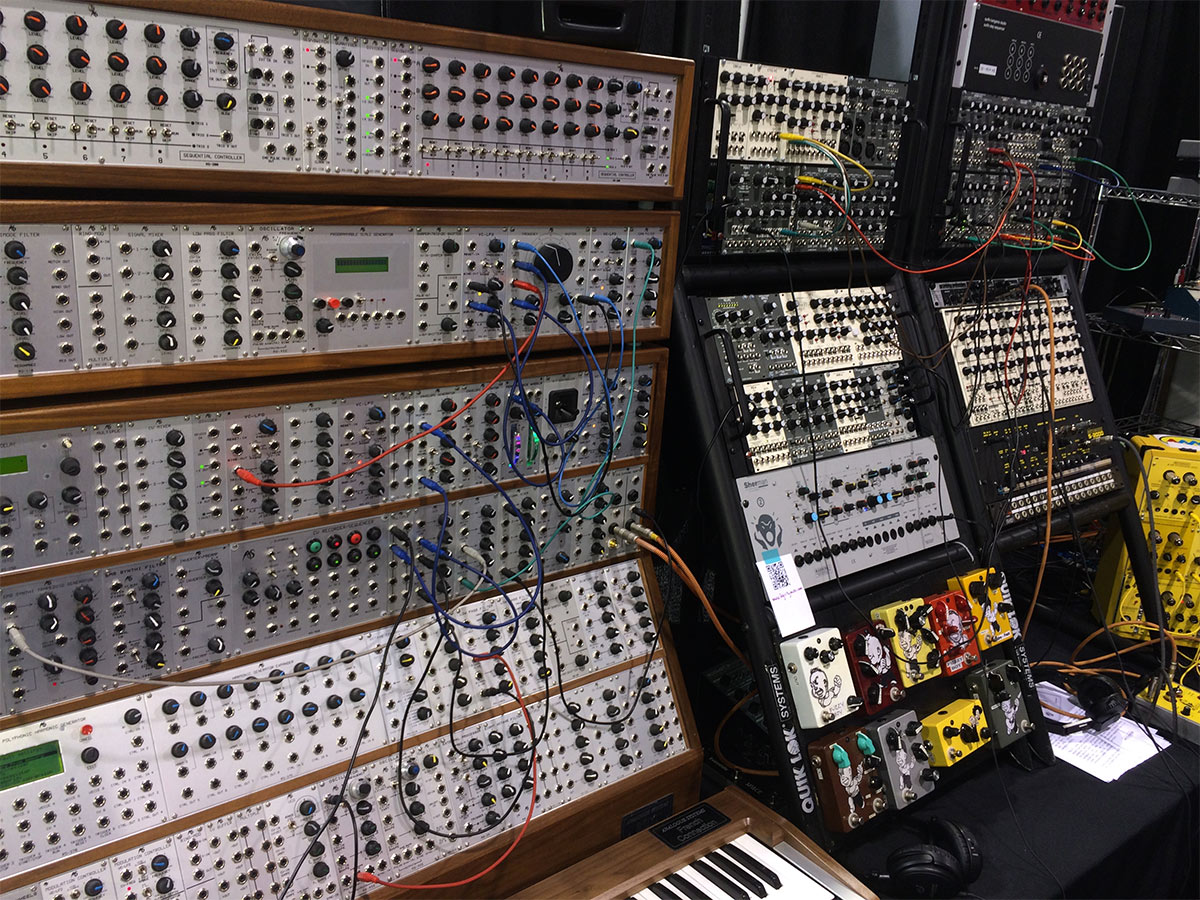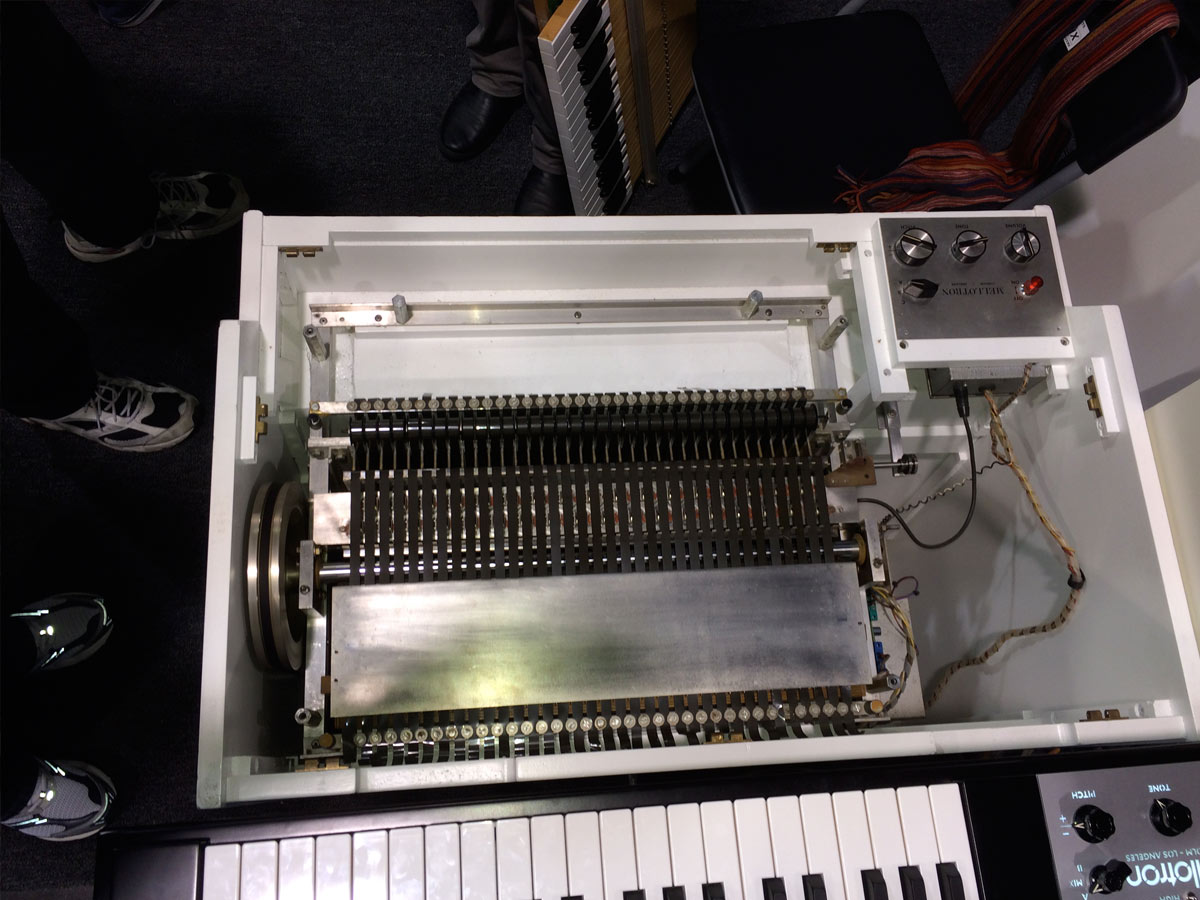A Visit to NAMM: Part I
The annual NAMM (National Association of Music Merchants) is currently holding its convention right across the street from Disneyland in Anaheim, California. My audio recording students asked me if I was planning on going and I told them that it really wasn’t that interesting to me. It’s the loudest convention I’ve ever experienced. It’s full of musicians of all sorts…both aging and younger…trying out the latest guitars or drums. But I decided to go anyway.
The NAMM show is restricted to trade people only. I can get in because I own a record label but my association with the Producers and Engineers Wing of NARAS (Grammy People) gets me a pass. It’s a pain to drive to Anaheim and an even bigger pain to find a place to park. But I got there, parked, walked at least a mile and made it through registration by around 2 pm. I’m only good for a few hours at a show like this, but I do like running into people that I know and checking out the latest gizmos and production tools.
Besides, I have to stay one step ahead of my students or they’ll start to think that I’m just another old guy that’s living in the past and out of touch with the current stuff.
I should explain that this is primarily a show for musicians. The subdivisions in the hall move from band instruments at one end, through drums and percussion, to guitars and finally to the studio electronics. It is different than the AES (Audio Engineering Society) conventions but there is a lot of analog and digital gear that is suitable for studios AND for home use.
There were several trends that dominated the show (I did spend most of my time in the electronics end of the show…not much interest in a Sousaphone). The first would be the focus on smaller, ever more powerful devices that can be plugged into your portable tablet. Who needs a big expensive studio any more when you can plug a digital microphone directly into you iPad, record using your 48-track multichannel DAW and mix through a set of high-quality headphones. It’s actually possible to produce very good digital audio (PCM only) recordings without a tower or laptop computer. Manufacturers are downscaling their expensive tools for casual recording musicians. All it takes is a little knowledge and presto…everyone’s a recording engineer/producer.
FIgure 1 – A large modular synthesizer [Click to enlarge]
The second trend that fascinated me was the return to yesterday. Maybe it’s because I was a music student when analog synthesizers and tape machines were new but I was surprised to see a large number of small companies selling modular synthesizers and other instruments that I remember from 30 years ago. The Moog booth was displaying a bunch of new machines and Dave Smith, one of the godfathers of synthesizers, had a new Prophet 12 version of a machine that dates back to the 70’s and 80’s. I actually had a Prophet 8 synthesizer in my original studio. I have to admit that these are very cool machines. There’s something about patching all of the modules together to make a sound that eclipses moving a mouse around a big video monitor.
Figure 2 – The inside of new Mellotron sampler using analog tapes [Click to enlarge]
Can you imagine my surprise when I happened on a local guy that specializes in re-manufacturing the original Mellotron (I just wrote about the Mellotron as an out-dated vestige of the 1960s)? He was reassembling one of his units as I walked up. There they were…the rows of analog tapes that produce the strings or horns or whatever sound library you want. I asked him about the production of new libraries and he told me that there are so many from the original production runs that he has plenty for new customers. I think I heard him say that he’s built and sold over 70 of these machines…for big bucks.
I guess if it’s old it’s new again. The reverence that we have for old stuff…especially old recording stuff…is somewhat misplaced, in my opinion. Digital samples are far more convenient and sound better than the Mellotron…and if you want the hiss and the other artifacts that are part of the magic, you can put those in as well.
To be continued…



